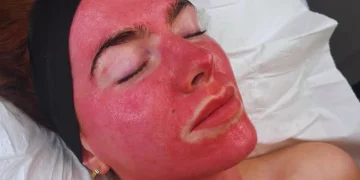You may be curious about the finest braiding techniques for your kinky curly hair. Braids are a fantastic way to save time on your daily style process while also protecting your hair and giving you a new appearance. Braiding kinked, curly hair, however, may be tricky, and not all braiding techniques are suitable for this texture. Getting ready, selecting the finest styles, braiding methods, and aftercare advice for kinks and curls are all covered in this article. Well, let’s begin!
Understanding Kinky Curly Hair
Before discussing braiding, let’s describe kinky curly hair and its traits. Kinky curly hair shrinks into tight coils. Africans have this hair texture, but others may also have it.
Curly, kinky hair requires more attention and water. Curly hair may be dry and brittle because the scalp’s natural oils can’t penetrate the curls and reach the hair shaft. Leave-in conditioners, oils, and butters moisturize and nourish hair.
Dry, brittle hair may be curly and kinked. Tight curls and coils might snap. Gentle detangling and avoiding hairstyles that strain kinkier, curlier hair are essential.
Knowing kinks and curls helps braiding. If you prepare and care for your hair, you may have beautiful braids without damage.
The different types of kinky curly hair
Kinkily curled hair is Type 4A, 4B, or 4C.
- Type 4A hair has tightly wrapped, crochet needle-sized curls. This hairstyle has well-defined curls and closely spaced strands. Avoid dryness and loss by hydrating and spreading type 4A hair.
- Type 4B hair may have tight coils or looser curls. Thick, curly hair is hard to maintain and prone to damage. Length retention requires stretching type 4B hair, which shrinks.
- Type 4C hair curls tighter than a pen. This hair has the tightest curls. If neglected, 4C hair may dry, break, and tangle.
Remember that many people have a unique mix of curl patterns and textures. Learn about your hair type and what makes it special to pick the best braiding styles and procedures.
Preparing Your Hair for Braiding
If you want healthy braids, last a long time, and are pleasant, you need to prepare your hair correctly before you start. These are some things you can do to get your curly, wavy hair ready to braid:
- Wash your hair with a clarifying shampoo to get rid of buildup from styling products, grit, and grime. If you do this before braiding your hair, it can make it feel clean and fresh.
- Use a deep conditioning treatment on your hair after you wash it. Your hair will be healthier, stronger, and better able to withstand the strain of braiding if you do this beforehand. Rinse the deep conditioner out with cold water after it has been on for at least 30 minutes.
- Gently remove knots from your hair with a wide-tooth comb or your fingertips. Before beginning to braid, make sure there are no tangles or knots in the hair.
- Braiding might be more challenging if your kinks and curls shrink while they dry. Stretching your hair using methods like African threading, twist-outs, or braid-outs can make braiding simpler and keep your braids from seeming too short.
- Avoid breakage and frizz by keeping your ends trimmed of split ends. If you want your braids to last, give your hair a good cut before you start.
Choosing Braiding Styles for Kinky Curly Hair
Choosing a braiding technique for kinks and curls involves many considerations. Use gentle braids to avoid hair damage and scalp discomfort. It’s vital to choose a hairstyle that suits your curl pattern and texture, since Type 4A hairstyles may work better than Type 4C ones. These braids highlight wavy or curly hair.
Box braids may be done on any hair type, even wavy. First, the hair is sectioned into small squares, then braided from the base to the tip. Box braids are fantastic protective hairstyles since they last for weeks.
Senegalese twists are box braids with two strands of hair. The twisting technique lengthens and stretches hair types 4B and 4C. Senegalese twists preserve hair for weeks.
Cornrows are small hair sections braided firmly at the scalp. This style won’t harm your hair. Cornrows prevent Type 4C hair from shrinking.
Two-strand-twist two hair sections from base to ends. This hairstyle is simple to maintain. Two-strand twists enhance the curl pattern of Type 4A hair.
Braiding Techniques for Kinky Curly Hair
Avoid damaging wavy, curly, or kinky hair during braiding. Braiding highly curly hair is explained below.
- Use little strain during braiding. Pulling too hard might hurt. Handle your hair gently.
- Without the right tools, braiding kinked, curly hair may be difficult. Choose a product that moisturizes hair without leaving a greasy residue. Use a leave-in conditioner or hair oil before braiding dry, damaged hair.
- Correctly segmenting the hair is essential for neat braiding. Clip or knot your hair into manageable pieces. This ensures consistent, tangle-free braiding.
- Twist your hair to secure your braid. This prevents untidy braids and breakage.
- Overdoing braids may damage hair. Avoid this by changing hairstyles regularly and without leaving braids in too long. You’ll have less breakage and fuller, healthier hair.
Maintaining Braids for Kinky Curly Hair
Braids for kinks and curls need regular upkeep to look their best and protect the hair from damage. Some suggestions for taking care of your braids are as follows:
- Maintain a clean and healthy scalp. Buildup is especially problematic for kinkier, curlier hair types, so regular washings are essential. Maintain a clean, healthy scalp by washing it regularly with a sulfate-free shampoo and a mild scalp cleanser.
In order to maintain their health and elasticity, kinks and curls need regular moisturizing. Between washes, keep your hair and scalp hydrated by using a leave-in conditioner or hair oil. Distribute the treatment throughout your hair, focusing on the ends.- If you wear a satin hat or pillowcase to bed, friction will be less, and your hair will be less likely to break. Since satin is so smooth and silky, it won’t snag or tug your hair as you sleep, making it an excellent option for covering your braids.
- To prevent breakage and damage, you should not tug at your braids or wear your hair in other tight styles. Instead, wear your hair down and gently arrange it.
- Renew your braids if they have become dull or frizzy with age. To revive your braids, sprinkle your hair with water and leave-in conditioner using a spray bottle. Your hair will be more hydrated and less frizzy as a result of this.
Conclusion
Finally, braids are a fantastic protective style for kinks and curls. If done correctly, braids may be a great way to preserve your hair from breaking and enhance your natural curl pattern, preserve your hair from breaking and enhance your natural curl pattern. Braiding requires careful tension, appropriate sectioning, and the use of materials formulated for your hair type. Be sure to keep your scalp clean, moisturize your hair, and refrain from tight styles and tugging after you have your braids in place. With these guidelines, you may braid your kinks and curls in a way that keeps them healthy and looking great.
Read – Get Luscious and Sexy Lips | Proven Tips and Tricks for a Perfect Pout














